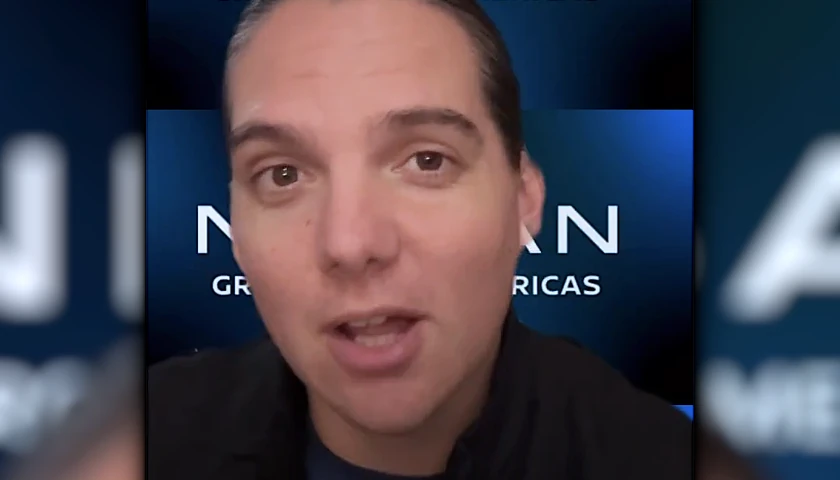by Will Kessler
Bankruptcies are rising for the first time in years as more Americans feel the pressure of declining economic conditions without the reprieve of President Joe Biden’s COVID-19 pandemic-era aid programs.
Americans filed more than 39,000 personal bankruptcy cases in August 2023, up 18% year-over-year, with bankruptcies beginning to spike after reaching record lows in 2021 and 2022, with the number of filings rising for all chapters for the first time year-over-year since 2010, according to data from the U.S. Courts. The number of bankruptcies is rising as Americans are increasingly burdened by high interest rates and falling real wages, while the COVID-19 pandemic stimulus and programs that were buoying Americans with debt begin to lose effect, according to experts who spoke to the Daily Caller News Foundation.
“[Americans’] own income is streamed (A) through the reduction of real wages after the pandemic and (B) through inflation,” Jai Kedia, a research fellow in the Center for Monetary and Financial Alternatives at the Cato Institute, told the DCNF. “On top of that, the cost of their debt itself is increasing and increasing quite rapidly and substantially, which is making the debt even harder to pay back.”
 The Federal Reserve has raised its benchmark federal funds rate 11 times since March 2022, putting the rate in a range of 5.25% and 5.50%, placing upward pressure on interest rates for debt and making that debt more expensive to hold. Mortgage rates, for example, reached their highest point in 22 years on Thursday, rising to 7.31%, decreasing home affordability.
The Federal Reserve has raised its benchmark federal funds rate 11 times since March 2022, putting the rate in a range of 5.25% and 5.50%, placing upward pressure on interest rates for debt and making that debt more expensive to hold. Mortgage rates, for example, reached their highest point in 22 years on Thursday, rising to 7.31%, decreasing home affordability.
“Because people have lost so much purchasing power under Biden and their budgets are stretched so thin, consumers are resorting to credit cards to make it from paycheck to paycheck,” E.J. Antoni, a research fellow at the Heritage Foundation’s Grover M. Hermann Center for the Federal Budget, told the DCNF. “That was a key factor in the explosion of credit card debt to a record $1 trillion. Now that credit card interest rates are at a record high, the financing charges on those credit cards are burying many families, with more interest accruing each month than they can put towards their balance.”
Total household debt reached a new high in the second quarter of 2023, with Americans collectively owing $17.06 trillion. More than $1 trillion of that debt was held in the form of credit cards.
Credit card delinquency rates, which are an indicator of people’s inability to pay for the payments on their debt and a contributor to future bankruptcy, reached an all-time low in the third quarter of 2021 at 1.55% before rising dramatically to 2.77% by the second quarter of 2023, according to the Federal Reserve Bank of St. Louis (FRED).
A new default cycle has commenced –
Bankruptcies likely to rise as high rates bite pic.twitter.com/nlPpM3qPvj
— Puru Saxena (@saxena_puru) September 26, 2023
Personal savings for Americans spiked to an all-time high in April 2020, increasing 406% to $6.4 trillion from just February 2020, according to FRED. The amount Americans have saved has come down drastically since then, to just $705.6 billion as of July, as Americans are increasingly spending through their reserves.
“A large number of government programs were put in place during the pandemic that essentially suspended creditors’ property rights and foisted large bills onto the backs of taxpayers,” Antoni told the DCNF. “There were moratoriums on student loan payments, rent, mortgage payments, etc. All the while, the government repeatedly sent out payments and many recipients initially chose to pay down debt, especially credit cards. But the government checks continued far after the ’15 days to slow the spread’ had ended, and the student loan payment moratorium is just now ending.”
Americans have also been free from the burdens of student loan payments over the last few years due to the student loan moratorium that ended on Sept. 1, with payments resuming this October, but the increased financial burden from payments may contribute even further to the rise of bankruptcies as people are less flush with cash. Due to the pause, the total balance of student loans owed by the public fell in the second quarter of 2023 by $35 billion, down to $1.57 trillion, according to the New York Federal Reserve.
One source of aid Americans received during the COVID-19 pandemic was through the American Rescue Plan, passed in March of 2021, which introduced $1.9 trillion in stimulus spending that gave checks to Americans ranging from $1,400 to $2,800, and also gave debt bailouts to local and state governments, pensions and Amtrak.
The Supreme Court ended a moratorium on evictions in a ruling in August 2021, saying that the Centers for Disease Control lacked the authority even during a health crisis to institute such a rule, according to The New York Times. A number of different moratoriums on evictions were put in place during the COVID-19 pandemic starting in early 2020, giving a reprieve to some Americans’ wallets while placing pressure on landlords.
“Essentially, people were using [stimulus] money to take on more and more debt at very cheap interest rates,” Kedia told the DCNF. “But next thing you know, once the Fed realizes that equation isn’t transitory in the way they thought it might be, now they suddenly start this massive interest rate hike again, and then suddenly consumers have taken on all this debt. Their credit card loan rates are significantly higher than they thought they were going to be. If you’re on an adjustable rate — mortgages or auto loans — those things just skyrocket.”
The White House did not immediately respond to a request to comment from the DCNF.
– – –
Will Kessler is a reporter at Daily Caller News Foundation.








